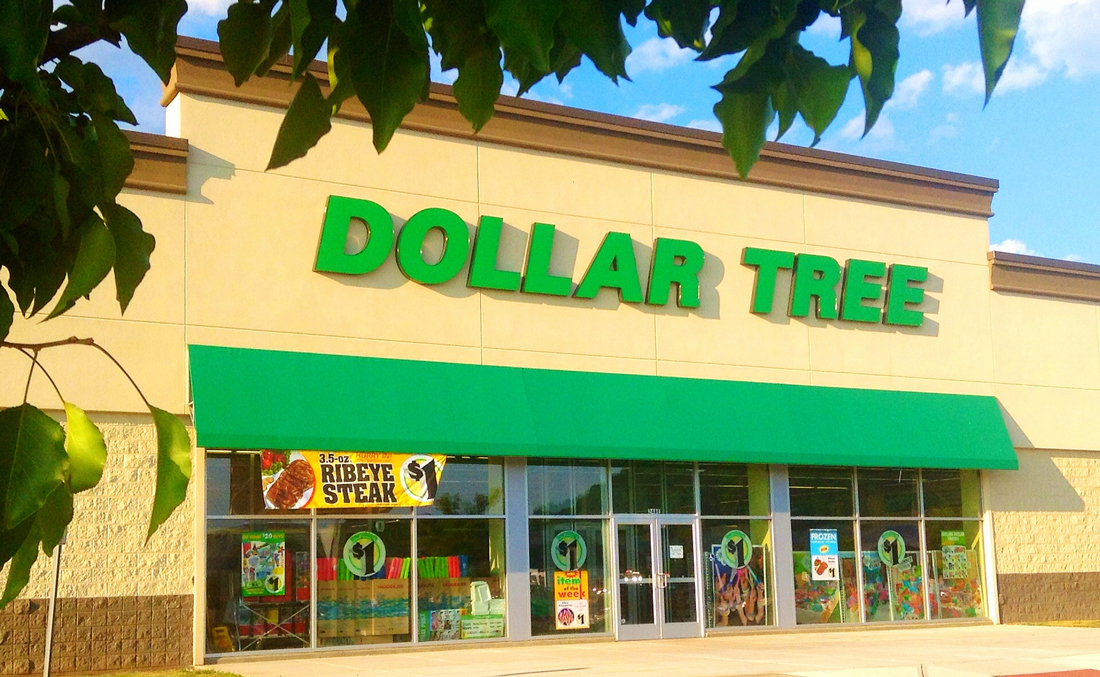By Harvard Zhang
Dollar Tree Inc. posted worse-than-expected fourth quarter profits despite positive results — and surging sales numbers – from its recent acquisition of a major competitor.
In the quarter ended Jan. 30, the Chesapeake, Va.-based discount retailer reported net income of $229.0 million, or 97 cents per diluted share, up 10.8 percent from $206.6 million, or $1.00 per share in the year-ago period..
Taking account of the July, 2015 acquisition of rival Charlotte, N.C.-based Family Dollar Stores Inc., adjusted net income edged up to $239.4 million from $239.0 million while per-share profits decreased to $1.01 from $1.16. The adjusted per-share profit was 6 cents shy of analysts’ consensus estimate of $1.07.
Dollar tree completed the $8.5 billion acquisition of rival Family Dollar last July, spreading its reach for value-oriented customers striving to balance their household budget.
Reflecting the big acquisition, the “everything’s-$1” chain store posted fourth-quarter net sales of $5.37 billion, jumping 116.7 percent from $2.48 billion a year ago.
“Through a difficult consumer environment, fourth-quarter results validate the relevance of the Dollar Tree brand,” Bob Sasser, Dollar Tree CEO, said in a Tuesday conference call with analysts. “Customers are shopping with us more often, we are attracting new customers every day, and when customers are in stores they are buying more.”
Speaking about the Family dollar acquisition and the integration process, Sasser added the company was “on track to achieve our stated synergy targets,” which is cutting annual costs by $300 million in 2018.
Net sales more than doubled in the first quarter comparing with a year ago as a result of the $2.68 billion Family Dollar sales and a 1.7-percent same-store sales uptick excluding the impact of exchange-rate fluctuations.
Top sales categories were party supplies, beauty products, and snacks and beverages, while geographically Midwest and Northeast stores posted the strongest same-store sales growth, according to Sasser. The Fortune-500 company had more than 5,900 stores across North America at the end of last year.
Dollar Tree quarterly net sales
[field name=”graph”]
Despite an 80-percent gross profit gain, fourth-quarter gross margin narrowed 6.3 percentage points to 30.8 percent from 37.1 percent. The contributors included an increased level of lower-margin products in its sales mix, $15.9 million inventory amortization and $11.5 million of planned markdowns with the transformation of Deals stores into $1-item stores.
Looking ahead, Dollar tree officials said they expected first-quarter per-share earnings of 75 cents to 83 cents, in line with the consensus estimate of 80 cents analysts polled by Bloomberg LP had been expecting. The company posted per-share earnings of 34 cents, or an adjusted 71 cents a year ago taking account of the then-pending Family Dollar acquisition.
The discount retailer forecasted first-quarter net sales of $5.06 billion to $5.12 billion based on a low single-digit increase same-store sales and larger stores, in agreement with analysts’ consensus estimate of $5.08 billion.
Full-year 2015 net income stood at $282.4 million, or $1.26 per share, down 52.9 percent from $599.2 million, or $2.90 per share. Dollar tree posted adjusted net income of $518.2 million, or $2.32 per share, down 19.7 percent from $645.6 million, or $3.12 per share.
The discount chain stores reported net sales of $15.50 billion in fiscal 2015, up 80.2 percent from $8.60 billion of 2014.
Dollar Tree’s stock closed at $82.03 Tuesday on Nasdaq, up a modest 2.2 percent, or $1.78, from Monday’s close of $80.25.

